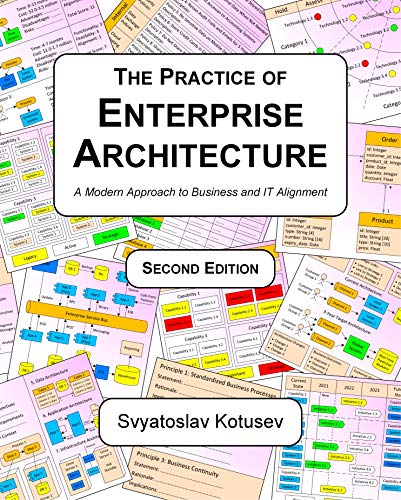

Most ebook files are in PDF format, so you can easily read them using various software such as Foxit Reader or directly on the Google Chrome browser.
Some ebook files are released by publishers in other formats such as .awz, .mobi, .epub, .fb2, etc. You may need to install specific software to read these formats on mobile/PC, such as Calibre.
Please read the tutorial at this link: https://ebookbell.com/faq
We offer FREE conversion to the popular formats you request; however, this may take some time. Therefore, right after payment, please email us, and we will try to provide the service as quickly as possible.
For some exceptional file formats or broken links (if any), please refrain from opening any disputes. Instead, email us first, and we will try to assist within a maximum of 6 hours.
EbookBell Team

4.4
32 reviewsEnterprise architecture (EA) is a set of descriptions relevant to both business and IT intended to bridge the communication gap between business and IT stakeholders in organizations, facilitate information systems planning and improve business and IT alignment. Due to complex historical reasons, the notion of enterprise architecture was always surrounded by endless speculations, dangerous myths, non-existing best practices, unfulfilled promises, expensive failures and grave disappointments. Traditionally the entire discourse around enterprise architecture was dominated by shallow advice and faddish approaches (e.g. well-known EA frameworks) infinitely distant from the practical realities, but nonetheless aggressively promoted by commercially motivated consultancies and gurus. At the same time, realistic and trustworthy information on enterprise architecture is still incredibly hard to find in any available sources.
Based on an extensive study of the actual industry best practices and existing EA literature, this book provides a unique, systematic, end-to-end description of various aspects of an EA practice integrated into a consistent logical picture. In particular, this book offers clear, research-based, conceptually sound and practically actionable answers to the key questions related to enterprise architecture:
This book is organized in a highly structured, sequential manner and does not require any prior knowledge of enterprise architecture. The book is intended for a broad audience of people interested in enterprise architecture including practicing and aspiring architects, architecture managers, academic EA researchers, EA lecturers and students in universities.